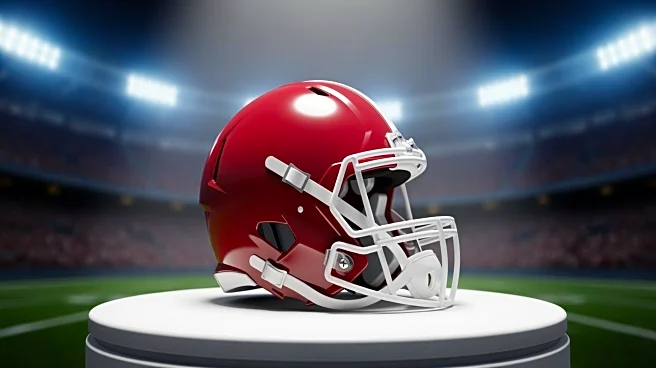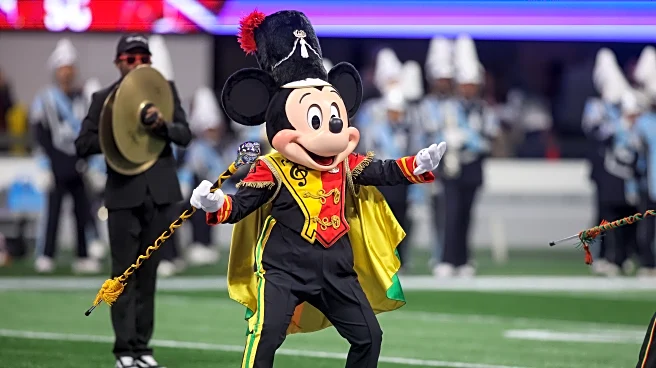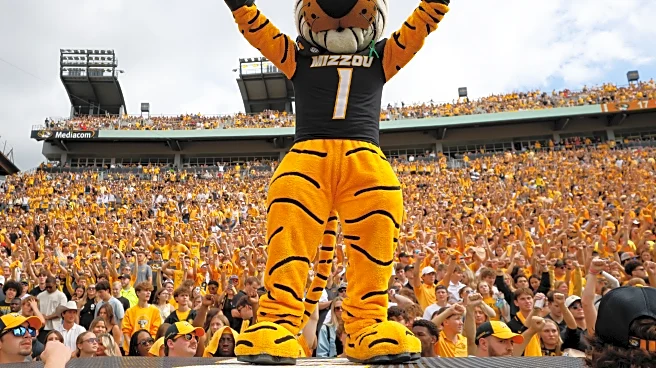What's Happening?
Nielsen has released its first rankings of the most watched college football teams, with Alabama leading the list. Through the first 10 weeks of the season, Alabama garnered 7.910 million viewers, followed
closely by Georgia with 7.626 million viewers. The rankings are based on viewership data collected from major networks including ABC, Big Ten Network, CBS, CW, ESPN networks, Fox and Fox Sports networks, NBC, and TNT. Overall, college football viewership has increased by 4% compared to the previous year, according to Nielsen's Big Data + Panel numbers. Additionally, college football dominated the top 25 live sports events for the week of October 27 to November 2, securing 10 of the top slots.
Why It's Important?
The increase in college football viewership highlights the sport's growing popularity and its significant impact on broadcasting networks and advertisers. With Alabama and Georgia leading the viewership rankings, these teams are likely to attract more sponsorships and advertising revenue. The rise in viewership also suggests a strong engagement from fans, which could influence future broadcasting strategies and investments in college sports. Networks airing these games may benefit from increased ratings, leading to higher advertising rates and potential growth in revenue.
What's Next?
As the college football season progresses, networks and advertisers will likely continue to monitor viewership trends to optimize their strategies. Teams with high viewership may see increased interest from sponsors, potentially leading to more lucrative deals. Additionally, the continued rise in viewership could prompt networks to invest more in broadcasting rights and coverage enhancements to capitalize on the sport's popularity.
Beyond the Headlines
The rankings not only reflect the popularity of specific teams but also underscore the cultural significance of college football in the U.S. The sport's ability to draw large audiences highlights its role in community building and regional pride. As viewership continues to grow, there may be broader implications for college sports, including increased funding for athletic programs and potential shifts in how college sports are marketed and consumed.














